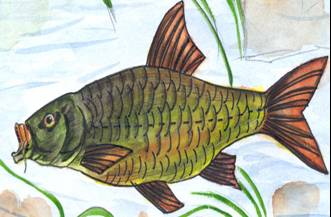
Freshwater ecosystems have played an important role in human society
since
time immemorial. Most of the ancient civilisations developed on the
banks
of big river systems; they depended on the rivers for food, and
sustenance
and also to a large extent used it as a channel for trade and travel.
Fisheries
have been an important source of food for people living along these riverine
ecosystems as well as those living farther away. Though marine
fisheries
are an important industry now, they were a major occupation of many
sections
of the society even before the development of modern trawlers.
With
the emergence of modern technology, most of the fishing methods have
become
mechanised all over the world and fishing is no longer the primary
occupation
of only a select group of the local inhabitants living along the
aquatic
habitats but rather other communities living close to water bodies have
also started using this resource as a source of occupation. In riverine
ecosystems, man has gone even further in tapping alternate sources of
energy
like hydropower, because of which a number of our major rivers have or
are
being altered and modified for the construction of dams and reservoirs.
The
effects of point pollution and habitat degradation have been felt and
water
quality standards have been set to meet the largely human oriented
goals of
reasonably clean drinking water, fishing etc. But most of these efforts
do
not, as yet, look into the effects of pollution on aquatic life other
than
those species that are directly useful to man.
Uttara Kannada district in Central Western Ghats
The river systems of Uttara Kannada are medium sized rivers which
flow through one of the most pristine forest areas left in the Indian
Subcontinent. Till recently, they were hardly affected much by human
activities as since populations around the region mostly used the water
resources for their
basic needs like drinking water, washing and occasional fishing. The
fishing
was also not very intensive, since none of it was targeted at catering
to
larger markets. Fishes were mainly used by the local people for their
own
consumption and sometimes sales at the local market. Traditional
fishing
methods usually employ locally made nets like gill nets and cast nets.
Some
areas have, however, been dynamited in the recent times.
The river Kali has a
number
of small and medium sized dams built on it. The development of
the
hydroelectric projects like the Supa and the Kaiga project on the river
Kali
are relatively new developments which have altered the habitats in the
surrounding
regions. Now, there are atleast six dams constructed all along this
river
and together with the West Coast paper mill at Dandeli (which dumps its
industrial discharge into the waters of the Kali), the river ecosystem
of
the Kali has been badly affected.
Studies like those by
Birasal et
al (1991) conducted on the river Kali have shown how the
physicochemical
properties of river water have changed since the construction of the
Supa
Dam on the upper reaches of the river. It has led to increased
siltation,
which has, in turn affected the growth of aquatic vegetation and
thereby
lead to decreased dissolved oxygen levels and increased carbon dioxide
levels
in the water.
The
river Bedti (or Gangavali, as it is called in the upghat areas) is so
far unaffected by dams, but the site at Manchikeri might be affected by
sewage discharge from Hubli town located some kilometers upstream. The
river Aghanashini,
which flows just south of the river Bedti, is the least affected as it
flows
mostly thorough relatively undisturbed forests and smaller settlements.
The
agricultural fields and plantations along the river at some places are
sources
of fertilizer pollution, but these are not many.
On the upper
reaches
of the river Sharavati is built the large Linganmakki reservoir and dam
which
is the source of much of the hydroelectric power supply of the State of
Karnataka.
There is one other dam construction underway downstream of this river.
The
building of dams on river systems greatly alters the natural habitat
conditions
in it. A large area surrounding the river channel is cleared up for the
reservoir
– this causes a major change in the terrestrial ecosystem around it
and,
in addition, the flow regime of the river itself is highly altered.
Current
velocities are suddenly reduced and there is heavy siltation of the
substratum
due to the deposition of the sediments brought from the upstream
regions.
These grossly alter the habitats of the river from their original
states.
Fish communities, along with the other flora and fauna of that region,
get
affected by this alteration. In addition, a number of fishes are known
to
travel upstream as well as downstream at various times of their life
cycle.
Thus, a dam can itself act as a barrier for the passage of these fishes
and
can affect the fish communities both upstream as well downstream of the
dammed
areas. Apart from the Linganmakki project, there are new
projects recently
sanctioned near Gersoppa which are expected to submerge surrounding
tracts
of forest areas.
More about this.. http://www.narmada.org/related.issues/kali/index.html